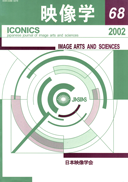68 巻
選択された号の論文の8件中1~8を表示しています
- |<
- <
- 1
- >
- >|
論文
-
2002 年 68 巻 p. 5-27,115
発行日: 2002/05/25
公開日: 2023/03/31
PDF形式でダウンロード (1165K) -
2002 年 68 巻 p. 28-46,115-116
発行日: 2002/05/25
公開日: 2023/03/31
PDF形式でダウンロード (718K) -
2002 年 68 巻 p. 67-83,117
発行日: 2002/05/25
公開日: 2023/03/31
PDF形式でダウンロード (844K)
レヴュー
-
2002 年 68 巻 p. 92-95
発行日: 2002/05/25
公開日: 2023/03/31
PDF形式でダウンロード (207K) -
2002 年 68 巻 p. 95-99
発行日: 2002/05/25
公開日: 2023/03/31
PDF形式でダウンロード (250K) -
2002 年 68 巻 p. 103-107
発行日: 2002/05/25
公開日: 2023/03/31
PDF形式でダウンロード (237K) -
2002 年 68 巻 p. 107-109
発行日: 2002/05/25
公開日: 2023/03/31
PDF形式でダウンロード (133K) -
2002 年 68 巻 p. 109-112
発行日: 2002/05/25
公開日: 2023/03/31
PDF形式でダウンロード (251K)
- |<
- <
- 1
- >
- >|
